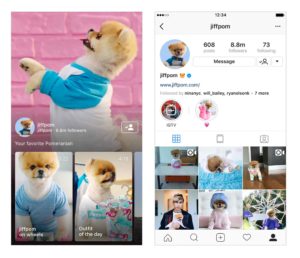In May of 2017, Facebook made a few adjustments to the user experience that should serve as a major sign of things to come. Users started noticing changes to Facebook’s video features, primarily sound automatically playing when a video was started, and videos being interrupted in the middle by ads (which is like, super annoying).
These changes were considered setbacks as far as UX goes, which made it clear that Facebook was shifting towards a prioritization of video advertisers. And why not? At the time, they were already one of the largest platforms in the world in terms of video viewership. Over the past few years, the tech giant has rolled out several more updates/new features, in an attempt to compete with YouTube as the king of online video content.
What video features have they introduced?
Facebook Live: On of the heels of successful livestreaming platforms such as Twitch and Periscope, Facebook’s live streaming feature was rolled out to all users mid-2016. Individual users or brand pages can go live for up to 4 hours, and the broadcast will either disappear or be saved as a video post. This feature has been highly recommended for brands after the “meaningful engagement” algorithm changes early 2018.
Facebook Watch: About a year ago, this video on-demand service was launched. It’s a feature that aggregates videos from different content partners, and makes video recommendations based on the user’s browsing history (sound familiar?). Facebook immediately started producing original content for Watch, and is continuing to build out features within this platform such as Watch Parties. A few weeks ago, Instagram rolled out IGTV, their own version of a customized video on-demand platform.
IGTV: Ever get sucked into your Instagram Stories and realize you’ve been watching them for as long as you’d normally watch an old school TV show? Facebook’s counting on it. In June they launched a separate app to complement Instagram, known as IGTV. It’s an ideal place for long-form content. All videos are full-screen and vertical so your editors can look forward to adding another format to their list of specs.

Up Next: In 2016, Facebook created one of the most evil inventions to those up us with difficult focusing. When a video finishes playing, a new one automatically begins that is usually loosely related to the video you just completed. This can result in the same kind of “rabbit hole” effect that YouTube has, causing users to spend a lot more time watching videos than originally intended.
Video Ad Changes: In addition to UX changes, Facebook also made some concessions for video advertisers. As mentioned, mid-roll video was the most notable and frustrating change. Users find mid-roll ads very annoying, and although it can increase your reach inexpensively, brands should consider whether that’s worth irritating potential customers. (Spoiler: IT’S NOT.) Video ads/posts also tend to have a lower CPM than static content, indicating that Facebook is favoring brands that ad to their video ecosystem. Constantly rolling out new tweaks such as interactive video, auto-captions, and augmented reality, Facebook is pulling out all the stops to ensure that brands do not neglect Facebook in their video content strategy.
What does this mean for marketers?
Regardless of how people feel about Facebook, it’s hard to bet against them. While YouTube is still well ahead in terms of video viewership, Facebook has grown rapidly, with users viewing 100 million hours of content daily (approximately 1 billion hours on YouTube). It’s also important to remember that the average time spent per video is 10 seconds on Facebook. YouTube is used more like a search engine, while Facebook video discovery is more spontaneous. Therefore, users are more accustomed to looking for long-form content on YouTube, but on Facebook you only have a few seconds to make a good first impression. Last but not least, remember, the best practices and specs of all these platforms are wildly different, meaning you need to create versions of your content for each channel. Do not spray out one version across channels! It will do more harm than good.
Conclusion
With Facebook’s aggressive move into the video space, it is crucial for marketers to understand that the same video strategy isn’t going to work across Facebook, Instagram, YouTube etc. For more information on how you can adjust your content to each channel appropriately, feel free to reach out to steve@srw.agency.


